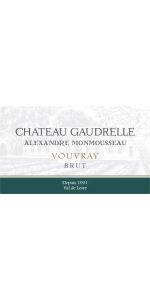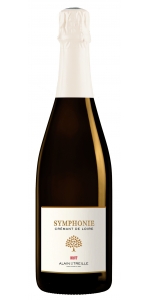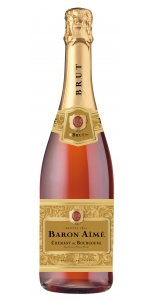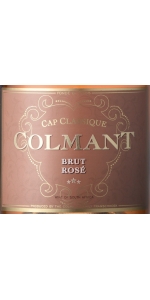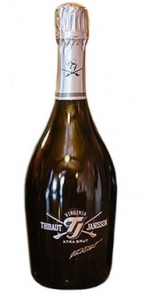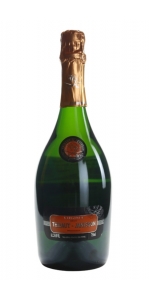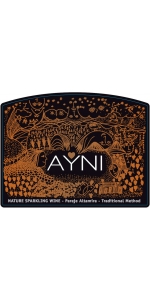Tanzanite Brut Method Cap Classique NV
| Country: | South Africa |
| Region: | Western Cape |
| Winery: | Tanzanite Wines |
| Grape Type: | Chardonnay |
| Vintage: | NV |
| Bottle Size: | 750 ml |
Alexandre M Vouvray Brut Methode Traditionnelle is made from 100% Chenin Blanc.
Tasting: Nose lime tree flower and brioche.
Mouth: complex and very expressive, so fresh and balanced with a smooth touch in mouth, bubbles so small who just tease the tang, light and good length.
ZERO DOSAGE !
Aperitif, seafood, oysters, light hard sheeses, and just for fun
Produced from 100% Chenin Blanc planted on clay and flint stones based soils.
Vinification: aged in stainless steel tanks with temperature controlled fermentation. Aged on the lees for 4 months.
Kieselguhr filtration.
This sparking wine is fresh and fruity. Rich and easy to drink, which makes it a wonderful aperitif. For the aficionados this is an excellent food friendly wine. Its quality makes it a great alternative to Champagne.
"The two sparkling wines should not be missed. They’re both terrific examples of how good sparkling Vouvray can be. Both are 100% Chenin Blanc cuvees, with the non-vintage Chateau Gaudrelle Vouvray Brut showing lots of effervescence and plenty of flowery brioche, buttered citrus, melon and dried apricot notes. It is crisp, fresh, and ideal for drinking over the next several years."
-Wine Advocate 90 pts
"Just off-dry, this almond- and apple-flavored wine achieves a fine balance of crispness and richness. There is just a touch of honey, intertwined with delicious citrusy acidity."
- Wine Enthusiast , 90 pts
Pierre Olivier Brut Vin Mousseux NV is made from 100% Airen.
A value sparkling brut, made with Airen grapes from around the French/Spanish border (next to the Pyrenees). This is a new Kysela Project.
The bubbles are obtained using the Charmat method, named after Eugene Charmat, where the second fermentation takes places in a large, closed pressurized tank. It is different from the Methode Champanoise as the secondary fermentation doesn't take place in the bottle.
Alain de la Treille Symphonie Cremant de Loire Brut is made from 90% Chenin Blanc and 10% Orbois (also known as Arbois or Menu Pineau)
The wines of Alain de la Treille reflect their vineyard of origin and are produced following the estate's unique guidelines: a strict selection of terroirs and vines, elaboration according to the traditional method and long maturation “sur lattes” in order to obtain the purest and most elegant expression of the Loire terroirs.
Elegant pale yellow color. The nose is delicate and complex with an array of fruity aromas such as grapefruit and peach with a touch of brioche. The flavors are fresh with floral character and a fresh finish.
Ideal for the aperitif, with a nice seafood platter or simply your favorite dessert.
Baron Aime Cremant de Bourgogne Brut Rose NV is made from 85% Pinot Noir & 15% Chardonnay.
Light pink color with coppery shades. The citrus notes blend subtly with aromas of strawberry, forming a fresh and delicate bouquet. The palate is lively, with notes of grapefruit and fresh bread. Together they form a rich, fresh and vibrant wine.
Review:
"Steely amber color. Aromas and flavors of strawberry, green apple, toasted oats, and creme fraiche with a satiny, lively, finely carbonated, dry light-to-medium body and a tingling, intricate, medium-length finish that presents overtones of slightly under ripe wild strawberries, apricot, warm bread dough, and lemon zest. Lively and bright for a perfect apéritif yet with just enough richness and body to carry you in seamlessly to the first course."
- Beverage Testing Institute (November 2022), 94 pts - GOLD MEDAL - BEST BUY
Lovely salmon pink color. A very delicate nose of strawberry and redcurrant fruit with floral undertones. There is a silky richness on the palate full of red berries balanced with a subtle bready texture. Very accessible. Will also develop nicely over time.
Colmant Brut Rose NV is made from 75% Pinot Noir and 25% Chardonnay
This wine spends a minimum of 24 months on the lees at a consistent temperature of 14C before degorgement.15% of the base wine has been barrel fermented.
Pinot Noir 75%, Chardonnay 25% (Franschhoek, Robertson and Elgin).
15% of the blend is made of reserve wine from the previous vintages and 15% of the base wine is barrel fermented.
This wine spends a minimum of 24 months on the lees at a consistent temperature of 14°C before degorgement.
Perfect as a summer sundowner. A delicious complement to white meat, strawberry dessert and decadent dark chocolate.
Review:
"The Brut Rosé (disgorged March 2018) is a blend of 75% Pinot Noir and 25% Chardonnay with 15% base wine and 15% reserve wine, with the Pinot Noir macerated on its skins for color, matured on the lees for 24 months. Deep salmon in color, it has a fine mousse and attractive strawberry and cherry scents on the nose - no shy and retiring rosé here. The palate is well balanced with Braeburn apples, hints of strawberry and a touch of tart cherries fanning out toward the creamy-textured, satisfying finish. A sparkling rosé that’s proud to be pink!- Neal Martin"
- Vinous (August 28th 2018), 91 pts
Tanzanite Brut Method Cap Classique is made from 80% Chardonnay and 20% Pinot Noir.
Fruity, flinty, nutty, honey and creamy notes and beautiful brioche tones are coming through on the nose. It’s dry, lingering and well structured. The Pinot noir gives the wine good backbone, structure and longevity and the Chardonnay gives flintiness which develops in creamy, elegant notes in the wine with ageing. Beautiful creamy mousse.
Tanzanite Wines Yearly source their grapes from Robertson in the Western Cape, famous for its specific areas with chalk in the soil. After sourcing these spots winemaker Melanie van der Merwe asked farmer Ernst Bruwer, from the Farm Mont Blois, to plant Chardonnay and Pinot noir grapes on these spots. After years of trials she realized that year after year the base wines made from these plots compared to base wines made from any other areas tends to mature much slower and gives beautiful complexity in the end product. At around 18.5 to 19 degrees balm hand picking of the grapes are done in small 18kg baskets. This is transported to a press house, which she rents during harvest time. She does whole bunch pressing on every 5 Ton of grapes. Yields are around 480- 500 liters of juice per ton of grapes. Juice is inoculated with Prise de Mousse yeast a specific French yeast strain she uses. Fermentation at cool temperatures for 8-10 days takes place and this is followed by Malolactic fermentation on all base wines. After MLF wines are blended. Secondary fermentation takes place in the bottle and wines are left on the lees to mature and tasted every few months to monitor the ageing on the lees. Minimum time spent on the lees will be 24 months.
It’s the only area in the Western Cape where you will find Chalk in our soil.
Age of the vines is around 8-15 years old.
Enjoy as an aperitif or with fresh seafood, oysters, smoked venison Carpaccio, creamy chicken, apple crumble and even Cape Malay curry.
Review:
"This is a richly flavored sparkler showing complex notes of brioche, apple, and a hint of clementine. It’s bone dry on the finish with lingering toasty lees notes. A blend of 80% Chardonnay and 20% Pinot Noir aged 24+ months on the lees. The winemaker is Stellenbosch enology grad Melanie van der Merwe who made sparkling wine for 11 years at Distell before starting her own brand."
- International Wine Review (Champagnes & Sparkling Wines for the Holidays: The Best of 2018), 90 pts
"A blend of 80% Chardonnay and 20% Pinot Noir, the NV Brut begins with biscuity aromas followed by green apple, citrus blossoms and lees. The palate is focused with precision and finesse and shows that the winemaker has taken a lot of time and effort to create this wine. Bright, energetic acidity livens up the mid-palate, and the mousse is firm with a soft nuttiness from the autolytic characteristic. The finish is long and subtly spicy with and lingers with notes of sweet brioche and cashew butter, as the wine spent two years on the lees. - Anthony Mueller" - Robert Parker's Wine Advocate (March 2020), 90 pts
The name Tanzanite, was inspired by Melanie's birthstone - the rare, beautiful and highly sought-after Tanzanite - this singular wine expresses her passion for creating unique sparkling wines in the time honored way.
She hires cellar space and makes her base wine in the old traditional French way of Hand harvesting and whole bunch pressing. Malolactic fermentation is done on all base wines as this gives the wine soft, creamy and elegant tones with maturation on the lees.
Wines are blended proportionally to the year’s vintage and quality. Mobile lines do the filtration, stabilization and bottling. The bottled wine is stored in Worcester where they work with the MCC. Riddling is done by hand (turning of the bottles to get the lees in the bottle neck). Then they hire in a mobile disgorgement unit to disgorge the wine. (Process of getting rid of the lees and adding the dosage). Then they wash and label the bottles with a mobile labeling line. All these mobile processes are done by temporary hand labor at least twice a year. The Cellar-hand Wilma and her family and friends helps Melany with all the hand labor processes. The production does not have the need to employ permanent workers so Melanie started working with the local previously disadvantaged individuals in the Worcester Community. She mainly works with ladies as there are plenty of ladies that would like to work part time, which also have a family they need to take care of, so if she plans ahead she can give these girls a temporary job in the times slots that suit them. In this way Melanie tries to make a difference and try to help the local community and uplift these girls.
This is an ongoing continuous process that happens periodically throughout the year.
Melanie grew up in the Hex river valley where her late parent farmed with Export table grapes. She fell in love with the grape and vineyards and decided to venture into winemaking as her brothers were the farmers.
She studied BSC Agriculture at Stellenbosch University, worked in France at Louis Roederer Champagne, Moet & Chandon and Pommery in 3 vintages. She Worked at Distillers Corporation as Winemaker from 1994-1998. In 1998 Distillers corporation and Stellenbosch farmers winery merged and formed Distell. She was appointed as Sparkling winemaker of the group. She resigned in 2006 and started her own small sparkling wine production in 2003 which she launched in 2006.
Her Professional career:
1994 – Senior Wine Technologist at Distillers Corporation
1995 - 1998: Senior Sparkling winemaker at Distillers Corporation
The House of JC Le Roux (affiliate of Distillers) opened its doors in Devon Valley in Stellenbosch in September 1998 and from 1998 to 2001 she was appointed as Senior Sparkling wine maker at The House of JC le Roux.
2001-2006: Distillers Corporation and SFW merged and Melanie was appointed as Cellar Manager / Winemaker at the House of JC le Roux / Distell. This involved the management of the Wine cellar and making all sparkling wines for the JC le Roux and Distell group.
8 Million Liter’s carbonated champagne and 1 Million liter’s Cap Classique sparkling wine was made and all the cellar workers fell under her management. During her career at Distell she developed four new Cap Classique style sparkling wines JC Le Roux La Vallée (The first semi sweet MCC to be introduced to the South African Market), JC Le Roux Scintilla & Desiderius (Pongracz)(Two high end Special Cuvee’s made from selected vineyards).
2006 till present: Owns and produces her own Sparkling wine brand called: “Tanzanite”
She only produces Method Cap Classique sparkling wine made in the time honored traditional way.
Melanie specialized in the field of Method Cap Classique sparkling wine (French Champagne method) by working overseas.
She worked and observed the Champagne process during harvests in 1997 and 2002 in the Champagne region of France. She worked closely with the "Chef de Cave’s” at the Champagne houses:
Louis Roederer Champagne - Michel Pansu
Pommery Champagne - Thierry Gasco
Moet & Chandon Champagne - George Blanc
She also visited Sekt cellars in Austria and Germany specializing in making Charmatt (Tank Fermented) sparkling wine.
She was invited by VITEFF in 2009 to present her Method Cap Classique with a few other SA producers at the bi-annual VITEFF congress.
Melanie is married to Wentzel van der Merwe and have two daughters:
Marí van der Merwe (born 2001) and Hané van der Merwe (born 2003)
Awards for wines made during her career:
From 1998 till present:
Veritas: Double Gold for Pongrácz.
Veritas: Double gold for JC Le Roux Pinot Noir, Gold JC le Roux Pinot Noir.
4.5 Star Awards for 4 of her sparkling wines in WINE Magazine.
She won the SAA Cap Classique Trophy for Pongrácz Cap Classique 4 times.
Veritas Double Gold for JC le Roux Chardonnay and Gold for Desiderius.
London Wine Trade Fair: Pongrácz Award for "Best wine in its class"
Nominated: Business Woman of the Year - South Africa. She was awarded as one of the twenty leading Wine makers in South Africa - Melanie van der Merwe
Veritas: JC Le Roux Pinot Noir Rose Gold..
International wine and spirits competition: "Best wine in its class".
Winning Wine Magazine / Amorim Cork Cap Classique Challenge Desiderius 2000 Cap Classique, Desiderius 2001 and Scintilla MCC 2003 in 2006, 2008 and 2012.
Tanzanite:
Gold for Tanzanite MCC at Michelangelo Wine Competition, 4 star Platter’s wine Guide and Wine Magazine MCC challenge (since 2006). From 2015 till present 4.5 stars in Platter. Scored 93 and 90 Points from Tim Atkin British wine master in 2016 and 2018. According to Chef du Cave of Vieuve Cliquot Champagne: “Tanzanite Method Cap Classique is one of the best South African MCC’s on the market …if not the best one tasted.
2015,2016,2017 Tanzanite MCC and Tanzanite Magnum 2007 were in the 5 Star line up tasting for Platter’s Wine Guide.
Melanie received Publicity in:
Oprah Magazine, Wine Magazine, Wynlander, The Civil, Food & Home, Rooi Rose, Die Kat, Finesse
House and Leasure, Landbouweekblad, Leef magazine, TV SABC2. She also acts as speaker at various events.
580 cases of Method Cap Classique Rose (Pinot noir/Chardonnay)
The family does not own any vineyards but each year they buy the grapes from these specific farms as it’s the best area for production of Chardonnay and Pinot noir for Method Cap Classique production.
Origin of Grapes: Robertson & Stellenbosch. There is a specific quality and style that‘s created. This can only be obtained by buying in the grapes used for making Tanzanite. The grapes come from Robertson (gives flintiness), Rawsonville (adds a creamy, clean taste) and Stellenbosch (gives longevity and structure). Yields are kept in check through aggressive pruning and suckering.
For the past 15 vintages Melanie has been buying grapes from Robertson as it’s the only area in the Western Cape with chalky soils. This is crucial in MCC production as the base wine made from these soils shows long ageing potential and specific flavors during ageing which is crucial for the Tanzanite style.
Melanie hires cellar space and makes her base wine in the old traditional French way of Hand harvesting and whole bunch pressing. Malolactic fermentation is done on all base wines as this gives the wine soft, creamy and elegant tones with maturation on the lees.
Wines are blended proportionally to the year’s vintage and quality. Mobile lines do the filtration, stabilization and bottling. The bottled wine is stored in Worcester where theywork with the MCC. Riddling is done by hand (turning of the bottles to get the lees in the bottle neck). Then they hire in a mobile degorgement unit to disgorge the wine. (Process of getting rid of the lees and adding the dosage). Then they wash and lable the bottles with a mobile labelling line. All these mobile processes are done by temporary hand labor at least twice a year. Cellar hand Wilma and her family and friends helps Melanie with all the hand labor processes. The production does not have the need to employ permanent workers so Melanie started working with the local previously disadvantaged individuals in the Worcester Community. She mainly works with ladies as there are plenty of ladies that would like to work part time, which also have a family you need to take care of, so if she plans ahead she can give these girls a temporary job in the times slots that suit them. In this way she tries to make a difference and try to help the local community and uplift these girls.
This is an ongoing continuous process that happens periodically throughout the year.
MISSION:
Tanzanite MCC is associated with African Sparkle. Inspired by Melanie's birthstone – the rare, beautiful and highly sought after Tanzanite – this singular wine expresses herpassion for creating unique sparkling wines in the time-honored traditional way. She has a quest for perfection and a desire to create wines, which, beyond their splendid taste, attain a perfect balance and provoke emotion. This quest is primarily related to very real factors such as the soil, origin of grapes, harvesting method, blending process and time spent on the lees during ageing. But, when they taste a wine it automatically evokes certain images and feelings. Celebrating your accomplishments and moments of success with generosity and grandeur is Melanie's essential mission. Discover who they are, discover their wines and values. Discover their dedication to making fine MCC that dazzle with the spirit of elegance and accomplishment.
This 100% Chardonnay blend is made from Tête de Cuvée, or first pressing of the grapes, considered superior in quality, with a high percentage of reserve wines for extra complexity, depth and richness, and a low added dosage to preserve purity and freshness.
Thibaut-Janisson Blanc de Chardonnay is made from 100% Chardonnay
Appellation 100% Virginia
Winemaking Notes The grapes are handpicked in small baskets late August and are gently pressed as whole clusters. After a settling of 24 hours, the juice is inoculated with selected Champagne yeast and ferments in stainless steel tanks at low temperature. Once the fermentation is over, the wine ages on the fine lees until the spring of the following year. The blend is then put together and cold-stabilized prior to bottling. The bottling occurs in the spring when the cellar temperature is conducive to a second fermentation in the bottle. The now sparkling wine will age on the yeast for over 24 months. At disgorging, a small amount of dosage liquor is added in order to balance the natural acidity.
Clean, crisp and refreshing! With scents of white flowers, apples and pears. This sparkling wine is elegant and complex with vibrant aromas, and fine active streamers. The depth of complexity is elegant and the intricate nuances of the terroir fill the nose and stimulate the palate. It’s full of youthful, bright and alert acidity.
Ayni is the quechua name of a principle of reciporcity practised for centuries by the andean cultures, it means in order to receive something you first have to give. Ayni is also the name of our most special vineyard, located in Paraje Altamira one of the best appelations within Uco Valley in Mendoza.
Argentina has a history of sparkling wine production since the early 1960’s.
Tasting Notes: Aged for 18 months on its lees before disgorgement. It’s a creamy with a nice toast aroma. It is made in a well-balanced style, with fine bubbles and a dry, palate-cleansing finish.
Vineyards: 100% Altamira in the Uco Valley subregion
Soil type: Sandy loam over calcium carbonate coated gravels, 30 to 50 cm deep
Grapes: 100% Pinot Noir
Average age of the vines: 10 years
Winemaking: Methode Traditionnelle (Champenoise). Aged sur lattes for 18 months. Made following the tratidional method, fermentation goes until it gets totallay dry. No liquor is added to keep the freshnes, elegance and purity of is clean profile.
A versatile wine, good on its own or paired with any food.
"An impressive first release for this all-Pinot Noir bubbly from Paraje Altamira, aged for 18 months on its lees before disgorgement. It’s a creamy, bready, well-balanced style, with fine bubbles and a dry, palate-cleansing finish. A fizz to watch. 2017-22"
- Tim Atkin (Argentina Special Report 2017), 92 pts
"Perhaps with the same sort of structural power that Altamira reds possess, this sparkling rosé shows something immutable in body, lively texture, bracing acidity. The wine spent 18 months on the lees and this, no doubt, provides flavor complexities well beyond the fruit, but still the fruit predominates with intense aromas, substantial, and crisp, lively acidity. If what you’re looking for is a sparkler for carpaccio or roast beef, this is it."
- Descorchads 2018, 94 pts
- back
It is the purest example of tempranillo grapes from Rioja Alavesa. Coming from a vineyard over a hundred years old with an extremely low production. You can taste a high concentration of ripe fruit, well-bodied, with a final touch of toffee and lime soil plus a perfect acidity which makes this wine fresh and very tempting.
VINEYARD From the Cuba Negra Vineyard in southern Labastida, the El Belisario bottling comes from Tempranillo vines planted in 1910.
ALCOHOL 14.5%
PROCESS Fermented naturally in oak foudre. Malolactic fermentation and aging occur in 100% new French oak barriques over two years.
TASTING Along with its brilliant garnet color, aromas of cherries, dried plums, black pepper, and savory mushroom leap from the glass. The palate is fresh and concentrated with mixed red and black fruit, chocolate, menthol, and coffee. Displays a surprisingly elegant nature. Pair with game, red meat and dark chocolate.
Review:
One of those wines that makes you belief in the special magic of old vines, El Belisario hails from La Greña, parcel planted on limestone rich soils in 1910. Aged in older French barrels, it's a focused, nuanced, wonderfully expressive Tempranillo with raspberry, pomegranate and red cherry fruit, filigree tannins, energetic acidity and sweet, caressing oak spices.
96 Points - Top Rated Single Vineyard in Tim Atkin's 2023 Rioja report
A wine for two seasons. During the winter, heat the wine already infused with spices to enjoy by the fire on a cold evening. Just pop the cork and heat for a nice cozy treat. In the summer, try chilling this wine and add some citrus fruits and apples to create a new favorite sangria recipe.

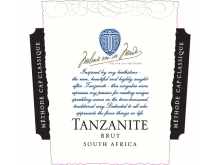

-150x300.jpg)
